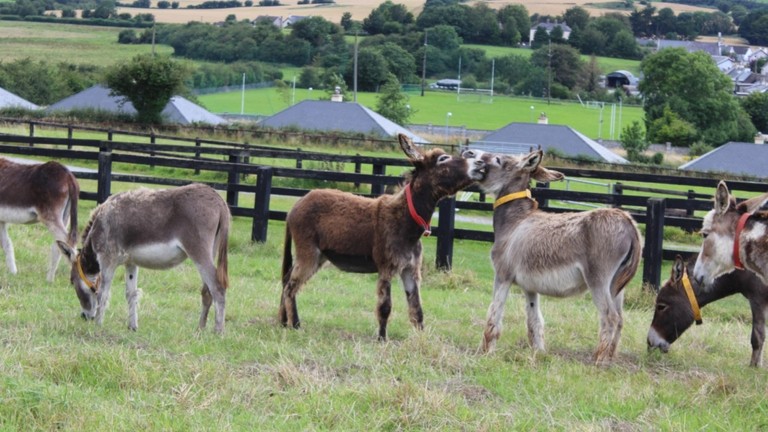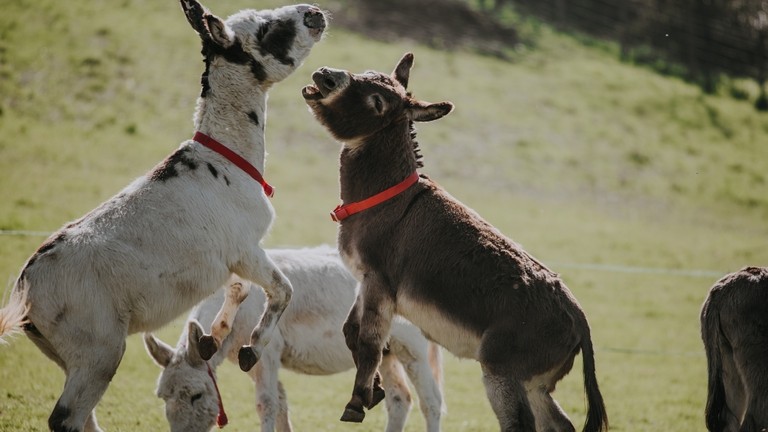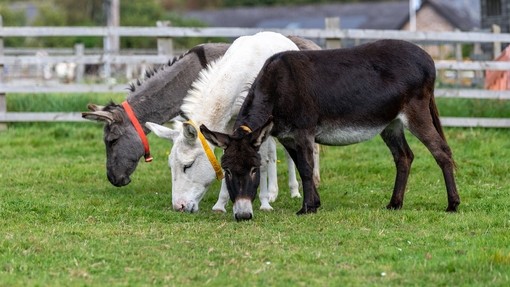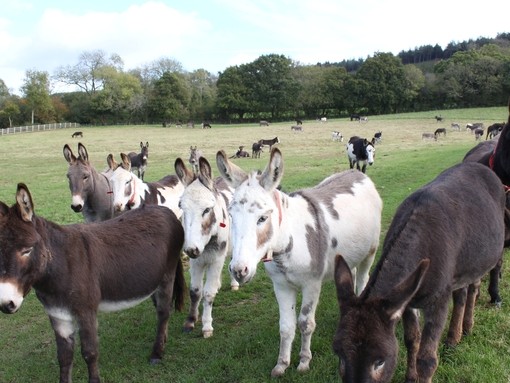
What are the different dynamics of a donkey herd?
Donkeys in the wild
Depending on the terrain, our domesticated donkey ancestors lived alone or in small groups in the wild. A wild stallion will hold a territory in the hope of attracting female donkeys. In contrast, mares tend to live alone or in small groups of two or three animals, perhaps including her young foal. The females wander arid habitats in search of enough food to sustain themselves and their foals, and they access water sources where stallions have made their territories. This is why, even today, domestic donkeys can still be territorial.
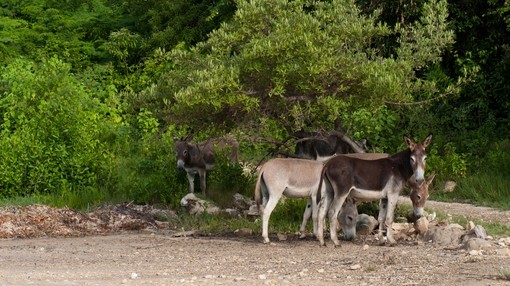
Group sizes
A herd is two or more donkeys. In the wild, the size of a herd depends on how much food is available. For example, in the arid conditions of North Africa, herds might be two or three animals. In contrast, in the relatively rich grazing in America or Asia, herds might reach 80 animals in the non-breeding season.
Stallions and mares
When donkeys do live in herds, stallions and mares have different roles within them. Stallions protect the mares and foals, chasing off other stallions who might harass the mares or predators who might attack foals. In contrast, mares rear their foals and provide safety in numbers through increased vigilance. Herds are a mix of mares and young male and female foals. Young males leave the herd around 18 months of age to search for their own mares. Young mares also leave the herd to find a suitable stallion and prevent inbreeding.
A stallion can increase his chances of breeding with solitary mares by holding a territory. First, however, the stallion has to be ready to fight, as other stallions are always on the lookout to take over his territory for themselves. This may sound tough, but it benefits the species as a whole and keeps them fit and agile while also helping with the gene pool. The mares also benefit from the stallion’s defence of his territory, as they are not chased by other stallions, allowing them to feed in peace.
In the wild, mares tend not to have a clear hierarchy with other females. Their ranks can change, and the only time you will see them be consistently aggressive to other mares is when they are defending their newborn foal. Mild threats, ear twitches or body movements are often all that is needed to avoid any conflict.
The importance of body language
Body language plays a massive role in the day-to-day life of almost all animals, including humans. An individual donkey can say a thousand words just with their body. Clear body language is vital for a herd to be cohesive and functional. We often wish we could understand what donkeys are trying to tell us, but we can when we learn to observe their body language.
Donkeys use facial expressions as part of their body language, and this is what we humans mainly react to when we are learning about donkey behaviour. However, to be most effective at reading donkey body language, we need to read the whole animal, from muzzle tension to tail movement. As a consequence of being so good at observing donkey body language, donkeys can learn to read the subtleties of human body language too, even from a distance.
Not only do donkeys use body language to communicate, but they also use their other senses. For example, they use touch, such as mutual grooming, to strengthen the bonds between herd members. In addition, by using their sense of smell, donkeys can learn what other donkeys are eating, reproductive stages, health status and information on new donkeys in their area.
The bray is one of six sounds a donkey makes. The others are the growl, grunt, squeal, whuffle and snort. The bray is the loudest and can be heard over long distances. Each donkey’s bray is individual to that donkey. In the wild, the bray appears to be used mainly by male donkeys as a territorial display. However, in domestication, both male and female donkeys bray for various reasons, including learned behaviour, where the donkey believes braying is effective at getting human attention or food.
Dealing with change
When new donkeys join the herd, there will often be disruption to the group. Competition for access to resources such as food, water, shelter and space, or access to people or companions, can lead to unrest between the existing herd members and the group’s newer members.
The donkey’s natural behaviour is to avoid conflict and the risk of injury, which could have life-threatening consequences in the wild. Minor disputes are quickly resolved with some ear pinning, tail swishes or maybe even excitable chases. However, when donkeys are equally determined to access valuable resources, the competition escalates to include nips or kick threats. Occasionally, these encounters can result in fights breaking out, but this is less common
Even in established herds, the group dynamics can change. A donkey’s desire for different resources can change depending on age, friendships, health and enrichment levels. As donkeys age, they will be less likely to compete for resources with younger group members. When resources become limited and donkeys become bored, the value of available resources increases, and donkeys are more likely to challenge each other to access the things they find most desirable.
Avoiding conflict and developing bonds and friendships with other donkeys are far more successful and less dangerous ways of getting along as a herd. It is common to think of dominant stallions ruling the herd and fighting for resources to survive as a way of life for donkeys. However, nothing could be further from the truth. In the wild, stallions spend as much as 98% of their time in peaceful activities. In reality, avoiding a fight, maintaining friendships and being submissive are safer and more successful ways of living together as a herd.
Want to know more?
Share this page
Tags
- Blog

